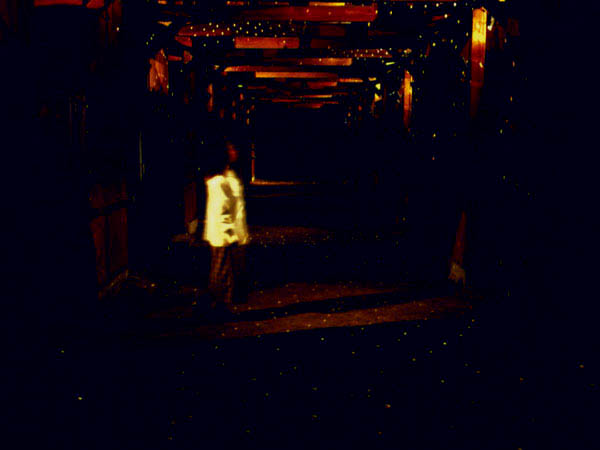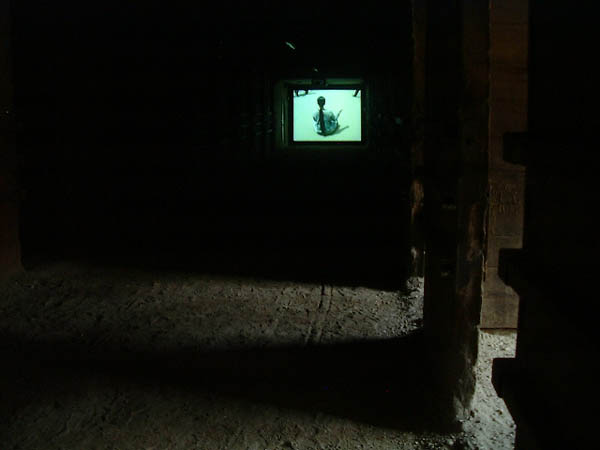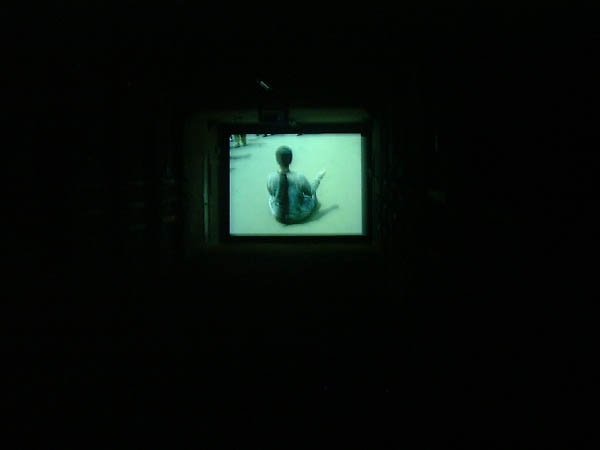DEMETER: TOKACHI INTERNATIONAL CONTEMPORARY ART
I went to see Shigeaki Iwai’s work “Snow Upopo” twice. All windows of the stable were closed down and I felt the darkness of it was darker than night. Weak light, which reminded me of snow, was flying and several people’s voices were echoing in the dark. To be honest, I was frightened to be there alone and I could move forward more than 2 meters on the first day. I resolved to move more on the second day but I could walk only 10 meters. Once I tried to listen to their words carefully, I could strangely concentrate on them and my fear of the dark was disarmed.

Snow Upopo, Shigeaki Iwai (Japan) Photo:Yoshihiro Hagiwara
“Upopo” means “a song” in the Ainu language. Ainu is the aborigines of Hokkaido. Mr Iwai asked more than 100 residents in the Tokachi area to talk about their images with a key word “snow in Tokachi.” “The sound when snow is falling down…”, “the first snow of this season will be…”, “the colour of the snow is….”, “things that the snow tells me are….” These images were put together and made up as the Upopo specifically for Tokachi. Sometimes I feel like being swallowed up when I look up the snowfalling sky during winter, and I thought the lights, which were whirling around in a circle in the stable, looked similar to that.
Furthermore, I was comparing Oki‘s Upopo, which was played at “Soso” before, to this work. Both the lives of the residents in Tokachi area and of the Ainu culture have taken root in this land for a long time. And I felt that they were coming to me in the Upopo as the snowfalls and lies on.

A Homeless Woman, Cairo, 2001, 6:33, Kim Sooja (Korea)
“A Beggar Woman, Lagos” and “A Homeless Woman, Cairo” are the works of South Korean artist Kim Sooja. They are parts of the series “A Needle Woman” that has been made since 1999. The works silently were on the screens at the end of the stables where no lights could be seen. I was tempted to check what was going on there because they were silent films. I was afraid of the darkness there as well, but got as close to them as I could.

A Homeless Woman, Cairo, 2001, 6:33, Kim Sooja (Korea)
A sitting woman in the crowd was shot from the back in “A Beggar Woman, Lagos.” She was just stretching out her hand to beg. The movements, which I could recognise, were passing people’s legs and shaken hair before the wind. In “A Homeless Woman, Cairo”, a crowd of curious onlookers surrounded a woman who was lying in the middle of a road. Is she still alive or not? The air seemed to be different between the one around the woman and the crowds. The common point, which I felt strongly from both works, was a gap between a chaotic bustle around these women and the peaceful place where I was hearing only birds’ twittering.
The explanation board said “Kim Sooja asks the role, of women as a gender in society, with a soft look through the video works.” However, I thought the directly-opposed things, “+” and “-“, were in her works so that felt “sharp” rather than “soft.”
Read more ...




